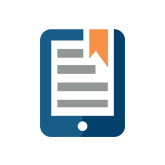Tips for Budgeting in Excel
Most companies today are using Excel as their primary tool for budgeting. It’s familiar and easy to use, and can be applied to companies of all sizes, from different industries. We are always looking for ways to help our clients make budgeting in Excel an easier process, so we have put together a list of tips and tricks to help.
Start with a Template
Consistency is key, and will help save a lot of time at the end of the budgeting process when all of the budgets have to be consolidated into a master one. Building templates that each division, department, location, etc. can use over and over again will make the process easier for all involved. Excel has a variety of pre-made templates that you can use, or you may want to think of creating your own. Either way, ensuring your budgeting team has a template to use is a good start.
Make use of Visual Cues
Excel offers a variety of data visualization tools such as graphs and charts to help display your data. Making use of tools like these are helpful when looking for differences in items such as budget vs. actual values.
Anchor Rows and Columns
Use the “$” symbol to anchor a row, column or cell reference so that the row/column will not be changed when copied.
Validate Your Data
This is best done first at the beginning of your budgeting process, and then again at the end. Excel has built-in tools that can help you validate your data. Go to ‘Data Menu’ and then ‘Validation’ to set your criteria. You can validate dates, decimals, whole numbers, etc. for whatever range you specify.
Add a Quotation Mark to Keep your Zeroes
Sometimes Excel will remove what it perceives to be ‘unnecessary’ zeroes. If you input a number such as 25.0000, Excel may change the value to just 25. However, these zeroes may be crucial to your budget. To ensure they won’t be dropped, add in a single quotation mark before the first number (’25.0000).
Protect Your Workbooks
In the Tools menu, select ‘Protection’ and then choose ‘Protect Workbook’ or ‘Protect Sheet’. Write the password down and share it with a few select people. It is important that this password is distributed within the finance/budgeting team in case the person who created it suddenly has to take time off of work. You don’t want to run into a situation where no one has access to the workbook anymore and the budget has to be put on hold/restarted.
Microsoft Excel is a powerful tool when it comes to budgeting, which is why many companies use it. However, it does have its limitations. If your company has large amounts of data, it can be hard to manage multiple spreadsheets and workbooks. As well, depending on the number of contributors and reviewers there are in your budgeting process, it can be hard and frustrating to keep track of changes being made to these workbooks.
This is where True Sky can come in to help you. Our budgeting and forecasting solution doesn’t just work with Excel – it is Excel. Our tool allows you to do more with the Excel interface you already know and love. Create workflows, automate your data collection, and view/organize your numbers easily with our data tools are just some of the ways we can help make your budgeting process a quicker and less painful one.
Get started today. Call us at 1 855 878 3759 or email info@truesky.com.




